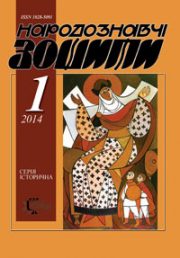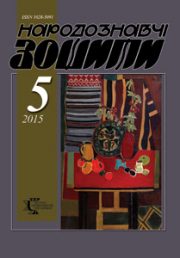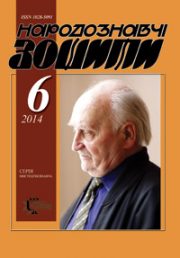The Ethnology Notebooks. 2022. № 1 (163), 31—35
UDK 745.51:008(477.83/.86)”18/19″
DOI https://doi.org/10.15407/nz2022.01.031
ODREKHIVSKYI Roman
- ORCID ID: https://orcid.org/: 0000-0003-3581-4103
- Dr. hab. in Art Studies, Professor,
- Departament of Design,
- Ukrainian National Forestry University,
- 103, General Chuprynky Str., 79057, Lviv, Ukraine,
- Contacts: е-mail: odre2010@ukr.net
Abstract. Introduction. The art of carving in Galicia has a long story of formation. It was based on the art of ancient Ukraine. Problem Statement. Such issues were raised mainly in the cultural and philosophical plane. In my article we will analyse this question as an art Investigation by analyzing the worldview of the masters of carving.
The purpose of the research is to show the interconnection of the philosophical backgrounds of masters of arts in Galicia and the development of the church carving art at the end of nineteenth — beginning of the twentieth centuries. The research methodology lies in the comprehensive disclosure of ideological principles of work of the masters of the carving and their contribution to the sacred culture of the Ukrainians of Galicia. The main methods are structural-logical, art-study analysis and methodology of the system approach. The scientific novelty of the research is that for the first time the philosophical foundations of the carving masters in Galicia are considered as a component of sacred and material culture.
Results. The analysis of the carvings of a number of churches shows the deep worldview principles of sacred carving’s art in Galicia. They were based on the traditional national art of carving. We notice this in the use of traditional ancient ornaments, as well as traditional carving techniques for the Galician region.
Conclusions. During the work it was established that the ideological foundations of the masters played an important role in the formation of the sacred culture of the Ukrainian population in Galicia (end of the nineteenth and first third of the twentieth century). After all, ideological principles have contributed to preserving the concept of national self-identification of Ukrainians in this region.
Keywords: Galicia, art of carving, artistic traditions, masters of carving.
Received 11.01.2022
REFERENCES
- Fihol, M. (1997). The art of ancient Halych. Kyiv: Mystetstvo [in Ukrainian].
- Fihol,M. (1998). The art of Halych XII-th—XIV-th centuries (History, Typology, Artistic features): extended abstract of dissertation in support of doctor for Art History, specialty: 17.00.05. Kyiv [in Ukrainian].
- Odrekhivskyi, R. (1998). The carving of Lemkivshchyna. Lviv: Spolom [in Ukrainian].
- Bilchenko, Ye. (2011). Dualism of mythological thinking as a prototype of a dialogical outlook. Culture and modernity, 1, 98—103 [in Ukrainian].
- Herchanivska, P. (2010). Invariance and openness of Ukrainian folk religious culture. Culture and modernity, 1, 92—96 [in Ukrainian].
- Stanislavska, K. (2011). The artistic and spectacular features of modern television advertising. Bulletin of the State Academy of Management and Arts, 1, 99—105 [in Ukrainian].
- Sabadash, Yu. (2013). Leisure in the mass culture of the modern world (on the example of Umberto Eco’s works). Bulletin of the State Academy of Management and Arts, 2, 42—45 [in Ukrainian].
- Bazhan, M.P. (Ed.). (1966—1970). The history of Ukrainian art: in 6 vol. Kyiv: URE [in Ukrainian].
- Drahan, M. (1970). Ukrainian decorative carving in the ХVІ–th—ХVІІІ –th centuries. Kyiv: Naukova dumka [in Ukrainian].
- Karmazyn-Kakovskyi, V. (1975). The art of the Lemko Church. Rome: Publishing House of the Ukrainian Catholic University St. Clement of the Pope [in Ukrainian].







